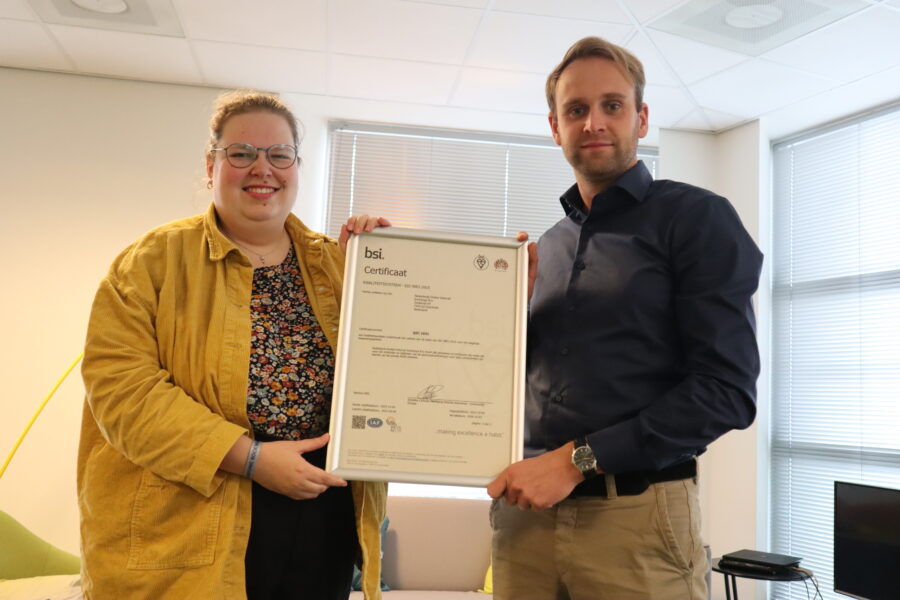The OSI-model and LAN
NDIX operates within the second layer of the OSI model, where OSI stands for Open Systems Interconnection. In this model there are seven layers that depict different functions in a network. The first layer is the physical layer, which includes the physical cabling of the network. NDIX focuses on the data link layer, or the second layer of the OSI model. The devices within a network or different networks must be able to communicate with each other, which at NDIX is done through an Ethernet connection. Data is transported to its intended destination(s) through this connection.
A VLAN connection also belongs to the data link layer, where a VLAN is a virtual version of a LAN (Local Area Network). A LAN connection is known for connecting a group of devices, such as computers, together to create a network. In a corporate location, this is useful because it allows files to be easily shared among different employees. However, a LAN costs a relatively high amount, especially compared to the virtual version of the LAN, the VLAN.
With a VLAN, a single network is realised as well, but the devices connected to it can be segmented in a simple way. So with multiple VLANs, you actually have multiple LANs that can connect to each other, but still operate completely and guaranteed independently of each other. For example, each department can have a VLAN, but a company’s printing devices can also form a network. All of these VLANs can use the same cabling and switches, which would not be possible with multiple physical LANs. Another thing is that thanks to the VLAN, data no longer has to go past all the possible destinations within a business location, but stays within the segmented network. This makes the VLAN option a lot cheaper and more efficient than having multiple physical networks.
Tagging a VLAN
When sending an Ethernet packet, there are some components that come standard with a packet to make the transport go smoothly. For example, you obviously have the actual data you want to send, or the payload. There is also a source address, where the data comes from, and the destination address, where the data goes. These components combine to form a packet called network standard 802.1, but VLANs use network standard 802.1Q. This variant adds another four-octet component, the tag. A VLAN ID is added to this tag so that it can be seen to which VLAN the packet belongs. It is even possible to add two of these components and double tag them. Such a standard is called 802.1ad and is especially useful for Internet Service Providers.
The reason for needing a VLAN ID stems from communication with other devices. Within switches, VLANs can in fact share information with each other, but VLANs from one switch cannot automatically make contact with another switch. To still be able to make contact with the desired end destination, the VLAN ID is used to get to the right VLAN and then to the right MAC address. Thus, in this way, there is more targeting and a faster transaction can take place. So a tag contains more useful information within the packet and a tagged VLAN allows for easier communication between two or more switches.
When a VLAN request is received within the NDIX network, it is mandatory to specify whether a VLAN is tagged or untagged. VLAN tagging is sometimes called frame tagging and in the same vein, frame untagging is done when the VLAN ID is removed. One term you may come across when researching VLANs is trunk or trunking. Trunk ports refer to the ports that can regulate traffic between switches and/or routers, after which trunk links are created, or a VLAN ID as discussed earlier in this article. Tagging is then done by this trunk port. Trunking terms are defined by Cisco, a manufacturer of network equipment and solutions. At NDIX, the terms tagged and untagged are used.
VLANs within NDIX
With NDIX, VLAN connections can be requested for free within the NDIX network, this is done through our new customer portal. These connections are often used for branch offices, service providers and other parties that are also connected to the NDIX network. However, different financial terms and conditions may apply to linked networks. Please check carefully whether this is indeed the case when requesting a desired interconnection. VLAN networks within the Ethernet can communicate with each other using MAC addresses, identification numbers for devices within Ethernet networks.



